A Texas judge has ruled against a teenager who claimed that the suspension of his dreadlocks was a violation of his rights.
Darryl George18, a junior at Barbers Hill High School in Mont Belvieu, was suspended twice after the school district declared his hairstyle violated its length policy.
The Barbers Hill Independent School District then filed a lawsuit, arguing that George’s long hair, which he wears in tied and twisted strands on the top of his head, would fall below his shirt collar, eyebrows or earlobes. ears when he released it.
District Judge Chap Cain III ruled in favor of the school district on Thursday, stating that the current discipline George has faced is legal under the CROWN Act.
The law, which stands for Creating an Open and Respectful World for Natural Hair, is a law that prohibits race-based hair discrimination against “protective hairstyles” like braids and locks.
George said his hair is “what makes me feel closer to my people.” This is how I feel closer to my ancestors. It’s just. That is what I am.’
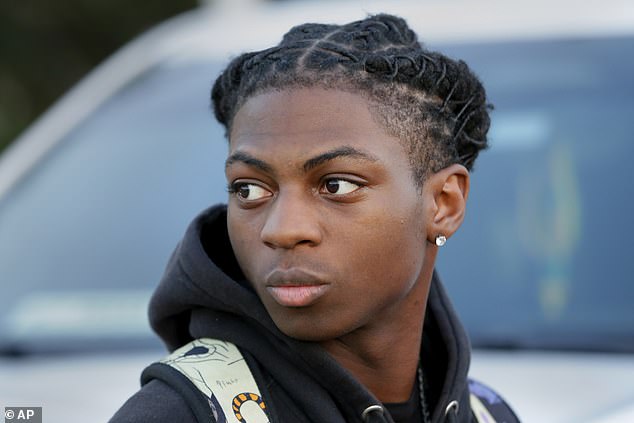
The Barbers Hill Independent School District filed a lawsuit against Darryl George, 18, a junior at Barbers Hill High School, arguing that his dreadlocks went against the school’s hair length policy.
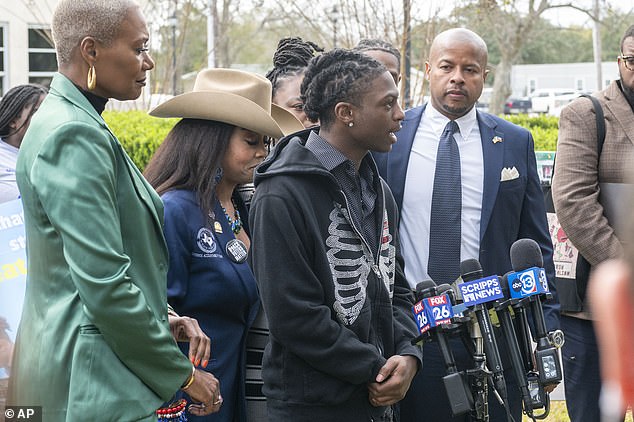

George is seen speaking at a press conference ahead of the court hearing that took place on Thursday. District Judge Chap Cain III ruled in favor of the school district and said the discipline against the student was legal.
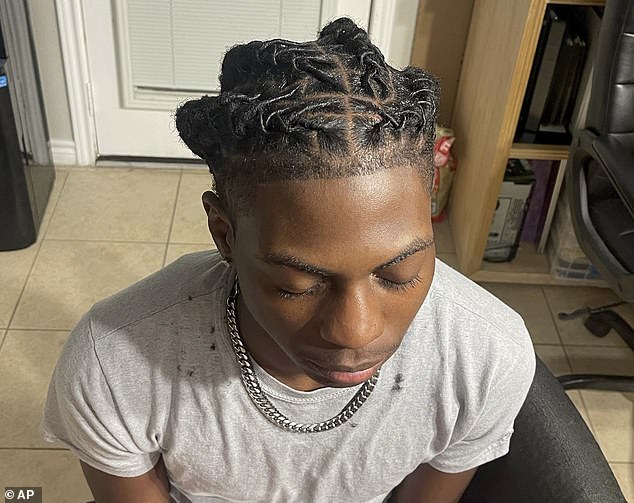

George was suspended twice for his hairstyle: first in September in an off-campus disciplinary program for 30 days and again after returning for an additional 13 days of in-school suspension.
Dozens of supporters attended the trial in Anáhuac, outside Houston, joining George and his mother, Darresha.
George said “it was sad” that the school district punished him for his hairstyle.
The CROWN Act went into effect in September, the same month George was first reprimanded for his dreadlocks and sent to an off-campus disciplinary program for 30 days.
Once he returned to class, the school removed him again for the same reasons and sent him to in-school suspension for 13 days.
The law also prohibits employers and schools from penalizing people for hair texture and other hairstyles such as afros, twists and Bantu knots.
Allie Booker, George’s attorney, presented two witnesses at the hearing: the teen’s mother and Democratic state Rep. Ron Reynolds, one of the co-authors of the CROWN Act.
Reynolds testified that hair length was not specifically discussed when the CROWN Act was proposed, but rather “was inferred from the very nature of the style.”
“Anyone familiar with braids, locs and twists knows they require a certain length,” Reynolds said.
The school district maintained in court papers that its policy does not violate the CROWN Act because the law does not mention or cover hair length.
Sara León, an attorney for the school district, said, “We appreciate that the court clarified the meaning of the CROWN Act.”
The district did not offer any witnesses to testify, but did present evidence that included an affidavit from the district’s superintendent defending the dress code policy.
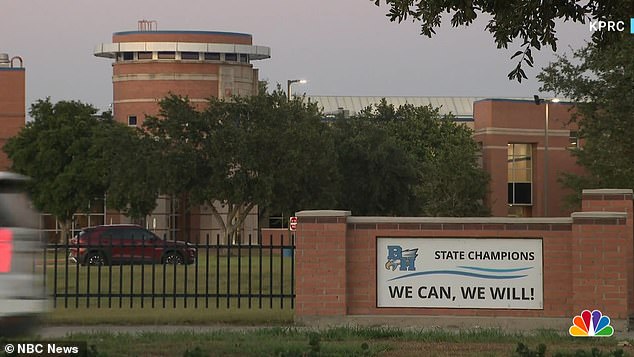

The school code states that a male student’s hair cannot be worn in a style “that allows the hair to extend below the top of the collar of a T-shirt, below the eyebrows, or below the earlobes when comes loose.”
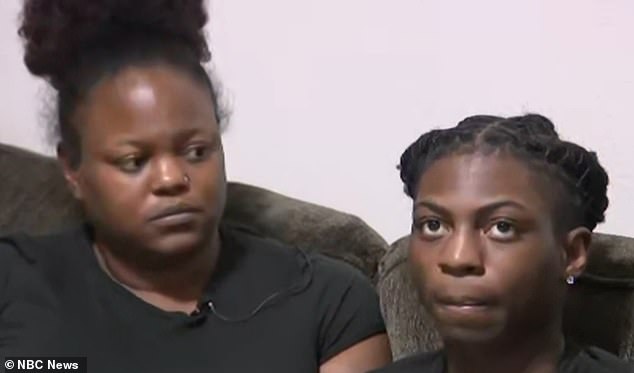

His mother, Darresha George, has insisted that her son’s hairstyle complies with school policy because he wears it up and that the school is being discriminatory.
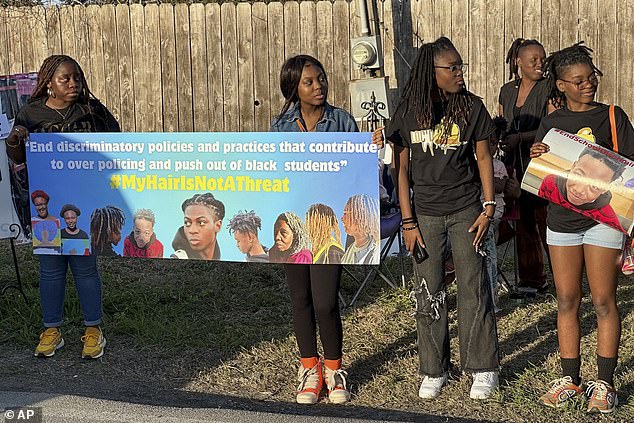

A group of protesters were seen holding signs with the teen’s face outside Poole’s home on Wednesday in support of George.
His mother has insisted that her son’s hairstyle complies with school policy because he wears it up and that the school is being discriminatory.
“This has a lot to do with the administration being prejudiced toward black hairstyles, toward black culture,” he said.
‘My son is well groomed and his hair does not distract from anyone’s education.
‘I’m trying to figure out how he’s committing an offense when he’s never let his hair down. How do you know her hair is below her eyebrows?
‘He is not receiving a proper education. He’s not getting proper instruction.’
A copy of the school’s notice, obtained by cnn says: ‘Darryl’s hair doesn’t meet the BH dress code when he lets it down. If Darryl corrects her dress code violation, she will be allowed to return to her regular classes.
The school district says its dress code is intended to “teach grooming and hygiene, instill discipline, prevent disruptions, avoid safety hazards, and teach respect for authority.”
“When you’re asked to conform and give up something for the good of the whole, there’s a psychological benefit,” said district superintendent Greg Poole.
“We need more teaching (of) sacrifice.”
In a paid ad that ran in January in the Houston Chronicle, Poole wrote that districts with a traditional dress code are safer and have higher academic achievement because “being an American requires conformity.”
A group of protesters were seen holding signs with the teen’s face outside Poole’s home on Wednesday.
Their signs read: “End discriminatory policies and practices that contribute to over-policing and expel Black students,” along with the hashtag #MyHairIsNotAThreat.
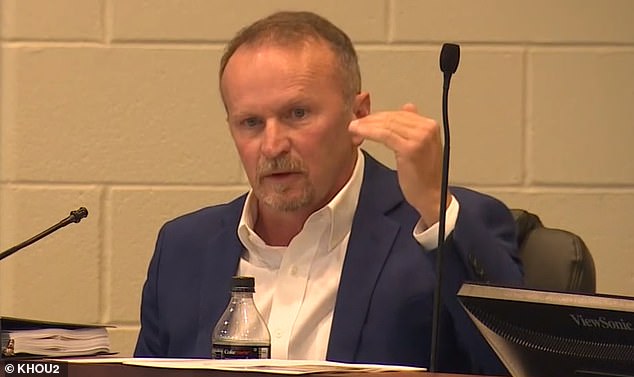

Barbers Hill Independent School District Superintendent Greg Poole denied the policy is racist
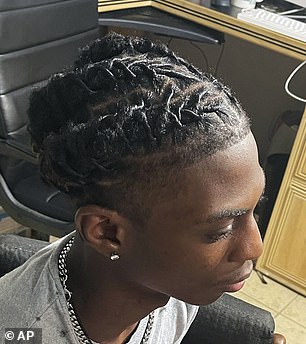

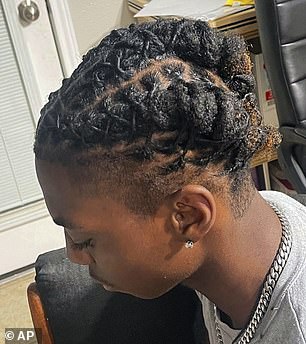

George wears his hair up while at school. His family has insisted that his hairstyle complies with school code.
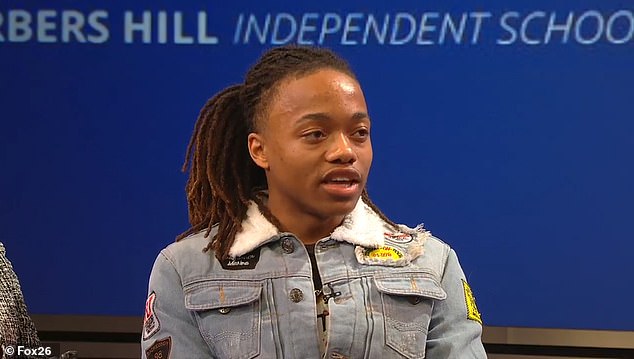

In 2020, another student at the same school, 18-year-old DeAndre Arnold, received an in-school suspension and was told he could no longer walk at his graduation because of his dreadlocks.
George said he feels like he’s being singled out because there are other kids at school with longer hairstyles.
“It’s frustrating because I get punished for something everyone else does: growing hair, having hair,” she said.
David Bloom, spokesman for the Barbers Hill Independent School District, told CNN that George’s graduation date will not be affected even though he missed most of his junior year classes.
‘As for the impact of graduation, there is none. “There is a program for him to complete his ISS dress code courses if he chooses not to cut his hair,” Bloom said, adding that a teacher is assigned to each ISS classroom to help students complete work. regular course.
In 2020, another student at the same school, 18-year-old DeAndre Arnold, received an in-school suspension and was told he could no longer walk at his graduation because of his dreadlocks.
Activists from Black Lives Matter Houston and the United Urban Alumni Association flocked to the Barbers Hill High School board meeting on Monday night, Martin Luther King Jr. Day, to protest what they say is a discriminatory policy.
The groups turned their backs on speakers who defended the school’s policy.
Arnold started growing his dreadlocks in seventh grade, but the length of his hair never became an issue at school until he returned after vacation this year and was told the policy had changed.
The teenager stated that his hair is a celebration of his Trinidadian roots and that he always wears it up while at school. He has attended schools in the Barbers Hill Independent School District for ten years.
‘They say that even (when) I have my hair up, if I had it down I wouldn’t comply with the dress code. However, I don’t write it down in school,” Arnold argued.
“We’re here for Deandre, but it’s about more than that,” his mother Sandy Arnold told CBS News.
“It’s about all the other Deandres that might come through Barbers Hill.”
